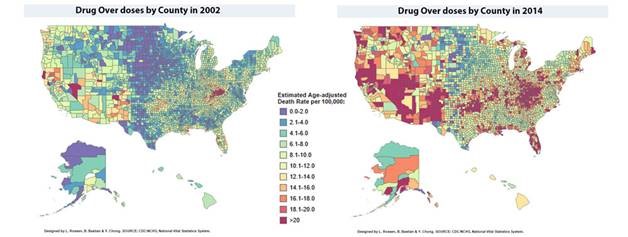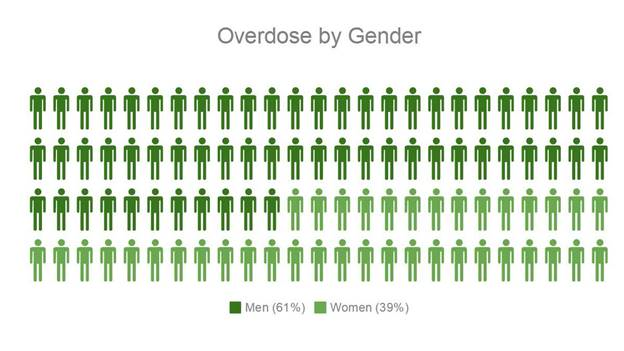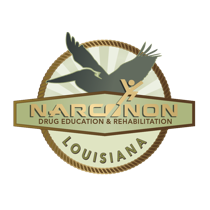Spreading Tragedy
A Real Look at the Drug Epidemic
Substance abuse has reached epidemic proportions in our country and resulted in devastating overdoses, deaths, crime and heartache. The family that lost someone so dear to them. The boy who used to be a stand-up citizen being arrested after stealing money for drugs. On a personal level, it destroys relationships, families and marriages and on bigger level, the scale is incomprehensible.
The reports on the growing drug problem in America began in 1971 when then US President Richard Nixon declared a war on drugs. When you see the side by side county comparison created by the Center for Disease Control (CDC), the severity of this epidemic becomes clear.

In 2002, few counties were seeing over 20 overdoses per 100,000 residents. Fast forward to 2014, a little over a decade later and almost a third of the country is in this range with a large number of rural areas falling into this category.
Many rural areas now out pace major metropolitan areas in the number of overdoses. With overdose being historically more prominent in major metropolitan areas, this places much of rural America center stage of the drug problem.
“The trend is now similar to that of the human immunodeficiency virus, or H.I.V., epidemic in the late 1980s and early 1990s.”
- Robert Anderson, the C.D.C.’s chief of mortality statistics

The Map above illustrates the number of casualties by state. There are very few places left in America where drug addiction is not a major community problem. In much of the northeast where the crisis has become gotten so out of control, substance abuse it is a main campaign issue for politicians. While Appalachia has become one of the most affected areas in the country, West Virginia had the highest rate of lethal overdose in 2014.

47,055 people passed away due to drug overdose in 2014. Among those casualties, 28,812 were male and 18,243 were female. The figures can be further broken down by age and ethnicity. There is one fact that rings true through all the breakdowns; drug addiction does not discriminate and there is no age group, gender, or race not marked with its tragedy.
There are actions we can take to fight this growing crisis in our country. The first would be getting educated on the signs of drug abuse. To assist with this, we offer free drug education materials on the signs of drug abuse for all drugs. The second step is getting those struggling with addiction into treatment. Watching someone struggle with addiction can have a strong effect on those connected to them. Now is the time to get your loved one into treatment before it is too late. Call us today.
